{article.name}
Stay Informed
Plants that are Poisonous to Horses
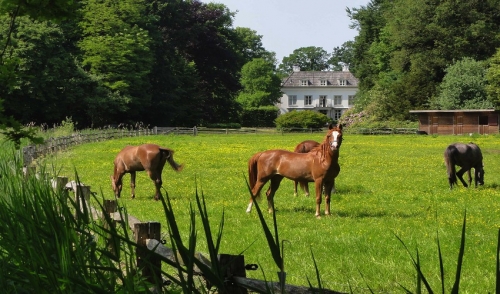
- Share this:
- Share on Facebook
- Pin on Pinterest
- Tweet on Twitter
There are literally hundreds of plants that are either outright, or potentially, toxic to horses. There are several factors that contribute to toxicity. First, the plant must contain a substance that is toxic to that particular species of animal (susceptibility). Secondly, the amount of plant (and by extension toxic substance) ingested must be sufficient to cause toxicity (dosage). This second factor is influenced by the relative toxicity of the substance (potency of the toxin) and the size of the animal. Toxicity occurs if the animal ingests a sufficient amount of a toxic substance to which it is susceptible. Due to their size, horses generally must ingest large amounts of a poisonous plant in order to become sick. However, there are some plants to which horses are particularly susceptible and/or which contain such potent toxins that ingestion of only a few ounces may cause toxicity.
Many plants that are potentially toxic are commonly ingested by horses and only pose toxicity issues under certain specific conditions. In many cases, these plants only become toxic if infected with funguses (fescue, red or white clover) or if they undergo stressful growing conditions, such as excessive moisture or drought, which cause them to accumulate toxic substances. Many toxic plants are unpalatable, and therefore, horses rarely choose to eat them. However, when driven by hunger horses will often eat these less palatable plants or they may be baled in hay where their lack of palatability is masked. Another common avenue of exposure for horses to toxic plants is via the provision of tree, shrub or grass clippings.
Due to the large number of poisonous plants found in North America, in this article we will focus on 12 that are either extremely common or considered to be extremely toxic to horses. You are encouraged to contact your local agricultural extension agency to obtain a listing of poisonous plants in your area and familiarize yourself with them.
Bracken Fern (Pteridium aquilinum)
AKA: brake fern, eagle fern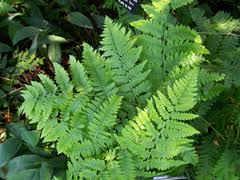
Range: Coast to coast, except for desert Southwest, often found in landscaping, gardens.
Toxin: Thiaminase which prevents absorption of vitamin B1 which is necessary for the maintenance of nerves.
Susceptibility: Horses need to consume large amounts (20-25% of diet) for several weeks.
Signs: Blindness, incoordination, weakness, depression, weight loss, jaundice.
Poison Hemlock (Conium maculatum)
AKA: Hemlock, spotted hemlock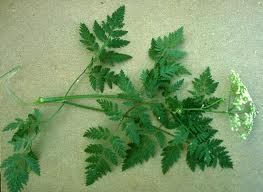
Range: Throughout US, especially in ditches and uncultivated areas.
Toxin: Conine (a neurotoxin) found in leaves, stems and seeds.
Susceptibility: 4-5 lb. is lethal. Not very palatable
Signs: Fast onset (15 min.) of tremors, salivation, nervousness, incoordination, dilated pupils, weak pulse and respirations, death (in less than 3 hrs.)
Tansy Ragwort (Senecio jacobata)
AKA: Groundsel

Range: Many different species of Senecio are found throughout US, common in pastures.
Toxin: Pyrroliziding alkaloids, cumulative effects on dividing cells, especially in the liver.
Susceptibility: 50-150 lb. consumed over time.
Signs: Appear when liver damage is already advanced – jaundice, fever, photosensitivity, weight loss, poor appetite, incoordination.
Johnson Grass/Sudan Grass (Sorghum spp.)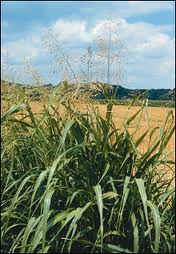
Range: Primarily the southern half of the US. Nontoxic hybrids are grown as forage crops.
Toxin: Cyanide compounds in leaves and stems which inhibit transport of oxygen– young shoots are highest in toxin. Nitrates also can accumulate in this grass.
Susceptibility: Horses less susceptible but can develop neuropathy signs affecting the back half of the body after weeks to months of eating fresh or baled wild Johnson Grass.
Signs: Ataxia and incoordination of hindlimbs, difficulty backing, dribbling urine, fetal damage. Bladder and kidney infections are common. Damage is irreversible.
Locoweed (Astraglus spp. Or Oxytropis spp.)
AKA: Astraglus – milkvetch, Oxytropis – white, wooly, purple locoweed
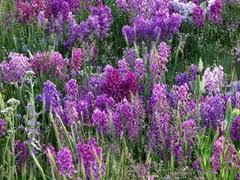
Range: Western half of US. Many different species all containing the same toxin.
Toxin: Swainsonine- an alkaloid that disrupts brain cell functions.
Susceptibility: Very palatable and addictive to horses.
Signs: unusual behavior, head bobbing, exaggerated gaits, staggering, falling, abortion, birth defects. Damage is irreversible with advanced cases.
Oleander (Nerium oleander)
AKA: Rose laurel, adelfa, rosenlorber, white, red or pink oleander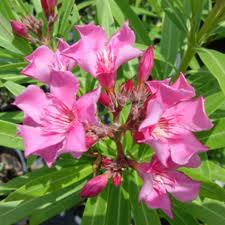
Range: Southern US, also ornamental, potted plants in cooler climates.
Toxin: Digitalis-like alkaloid in all parts of plant (even dried leaves) – disrupts heart beat.
Susceptibility: 1 oz. (30-40 leaves) can be lethal.
Signs: Colic, sweating, difficulty breathing, tremors, irregular heart beat seen within a few hours of ingestion.
Red Maple Trees (Acer rubrum)

Range: Throughout US
Toxin: Unidentified – oxidant that breaks down red blood cells. Wilted and fallen leaves are most toxic. Silver and sugar maple leaves may have the same toxin but in lesser amounts.
Susceptibility: Only horses are affected – 1.5 lb. of leaves is toxic, 3 lb. is lethal.
Signs: Lethargy, off feed, dark red-brown urine, increased heart and respiratory rates. May be reversible if treated promptly and exposure stopped.
Water Hemlock (Cicuta spp.)
AKA: spotted water hemlock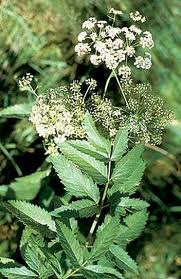
Range: Throughout the US, in wet areas – marshy areas, irrigation ditches, streams.
Toxin: Cicutoxin alkaloid – one of the most toxic plants in the US. All parts toxic but especially the roots.
Susceptibility: Less than 1 lb. of leaves or stems is fatal. Fairly palatable
Signs: Excessive salivation, dilated pupils, nervousness difficulty breathing, convulsions. Signs appear within 1 hour of ingestion and death occurs within 3 hours.
Yellow Star Thistle (Centaurea solstitialis) & Russian Knapweed (Acroptilon repens)
AKA: Barnaby’s thistle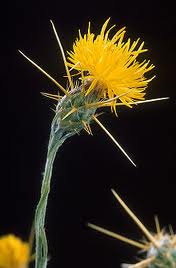
Range: Western half of US
Toxin: multiple toxins that affect the brain
Susceptibility: Must consume 50-200% of body weight over 2-3 months for toxic effects.
Signs: Lockjaw, unable to chew, incoordination. Damage to brain is permanent.
Yew (Taxus spp.)
AKA: Japanese yew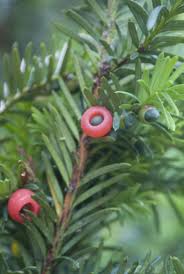
Range: Throughout US. Common ornamental bush/tree.
Toxin: Taxine – respiratory and cardiac collapse. Toxin found in all parts of plant, even dried leaves.
Susceptibility: Extremely toxic to horses. One mouthful can be lethal in minutes.
Signs: Sudden death is common. May see tremors, colic, difficulty breathing, slow heart rate.
Silverleaf Nightshade (Solanum elaeagnifolium)
AKA: Prairie berry, silverleaf nettle, white horsenettle, silver nightshade
Range: Central, south central and southwest US
Toxin: alkaloid. When even a small amount of this toxic plant (fresh or baled in hay) is ingested in combination with ivermectin administration, ivermectin toxicity may occur.
Susceptibility: This phenomenon has only been observed in horses.
Signs: Neurological signs include depression, weakness and ataxia. Liver signs include jaundice and weight loss
Blue-green Algae (Cyanobacteria spp.)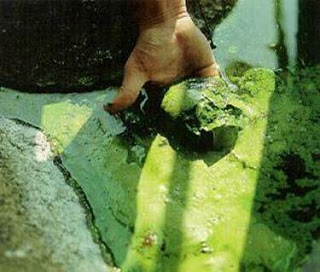
Range: Throughout US. More than 30 toxic species. Fresh water sources that are nutrient rich, during warm, sunny weather.
Toxin: Multiple neurotoxins and liver toxins
Susceptibility: A few ounces to gallons of affected water, depending on the type and concentration of the toxin present. Horses are less sensitive than ruminants.
Signs: Occur in minutes to hours. Diarrhea, coma, tremors, paddling, labored breathing.
Plant toxicities can be prevented. Here are some tips for how to prevent plant toxicities in your horses: Learn about the toxic plants in your area and how to identify them. Assess the landscaping around your pasture for potentially toxic ornamental plants and never dump clippings into a pasture. Monitor your pastures for potentially toxic plants and eliminate them. If you use a herbicide such as 2,4-D, toxic plants may increase their toxin load and become more palatable so limit access until the weeds have completely died off. Try to avoid overgrazing of pastures. If pastures do become sparse, offer supplemental hay to the horses so that they are less likely to sample non-forage plants out of hunger. Be especially vigilant about toxic plant surveillance in pastures close to a natural water source or marsh (hemlock and blue-green algae).
There are many different types of plant toxins that can cause a variety of clinical signs ranging in severity from mild weight loss to death. Unless ingestion of a toxic plant is witnessed, diagnosing plant toxicities can be very difficult. If you suspect your horse may be suffering from a plant toxicity, seek veterinary assistance immediately.
Special Offers
We are constantly adding new specials to our site. Be sure to check back often!

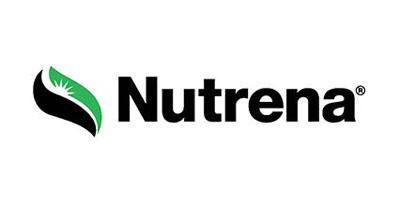
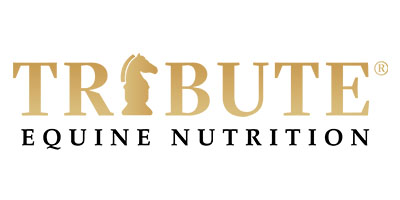

Comments